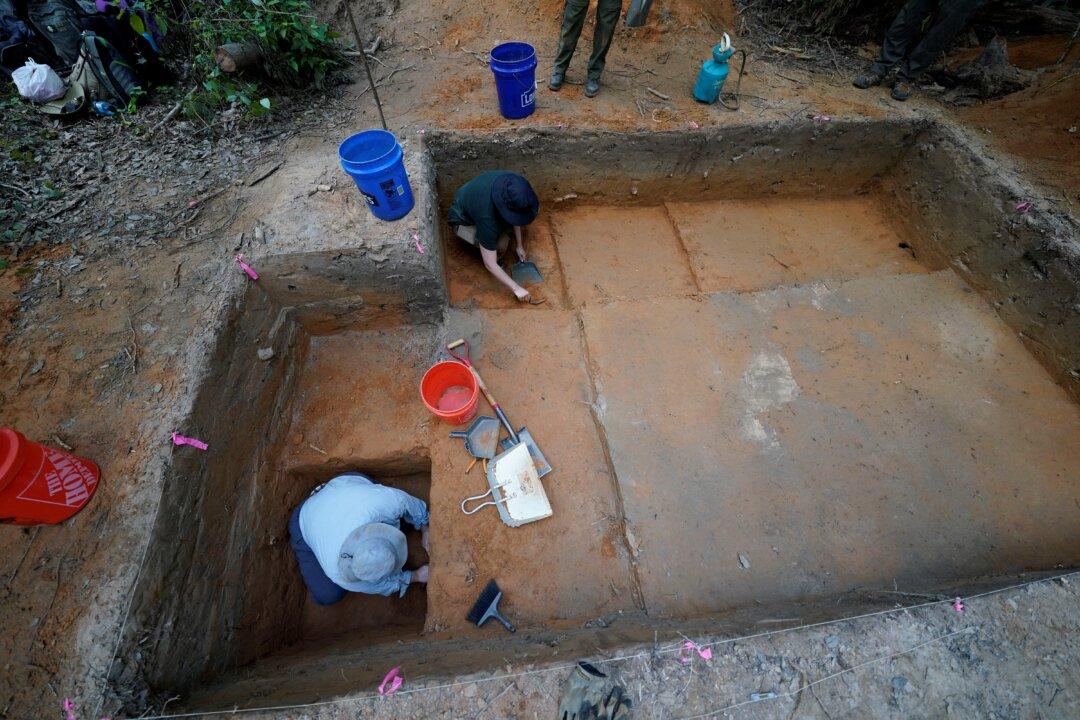VERNON PARISH, La.—Long buried under the woods of west central Louisiana, stone tools, spearpoints, and other evidence of people living in the area as long as 12,000 years ago have become more exposed and vulnerable, due to hurricanes, flooding, and looters.
This summer, archaeologists have been gingerly digging up the ground at the Vernon Parish site in the Kisatchie National Forest. They have been sifting through dirt to unearth and preserve the evidence of prehistoric occupation of the area.





